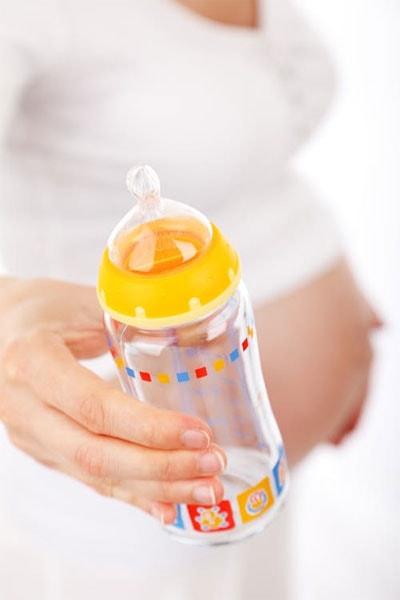
Written By: Keeley Drotz, RD
Title: Registered Dietitian
Alumni: Seattle Pacific University
Last Updated on:

Table of Contents
If handled or stored improperly, bottles of breast milk or formula can carry illness-causing germs. Here’s how to keep them clean and safe:
Sterilize bottles, nipples, and rings in boiling water upon first use. Thereafter, use the dishwasher or hot, soapy water and air dry before each use.* To prevent fungal growth, regularly rinse nipples in a vinegar and water solution (1-to-1 ratio) and air-dry. Store unused bottles in a clean, dry place with nipples covered.

Breast pumps enable women to extend benefits of breast feeding to their infants while heading back to work. Store breast milk in BPA-free plastic or glass containers with tight-fitting lids, or in breast milk storage bags. Avoid disposable bottle liners or plastic bags due to contamination risk. Mark containers with the date and use oldest first. Wash hands, pump parts, and storage containers with hot, soapy water; rinse well and air dry (or use the dishwasher).* Due to breast milk’s unique properties, it stores remarkably well.
Thawed (previously frozen) breast milk may be stored in the refrigerator up to 24 hours. Never leave it at room temperature or in an insulated container, and do not re-freeze.
Thaw breast milk in the refrigerator for several hours or overnight. To thaw it more quickly, hold the container under warm running water, or put it in a pot/bowl filled with warm water. Do not thaw it at room temperature, with hot water, or in the microwave.
Because there is no research regarding the safety of leftover breast milk, many experts recommend discarding it, particularly if it’s been at room temperature for over an hour. However, there are no reports of problems when leftovers are immediately refrigerated then used within a few hours; consult your pediatrician. To avoid leftovers, store milk in small amounts (2 to 5 ounces) or the amount your baby will consume in one feeding.
Check the expiration date and condition of the can, and store according to the directions on the label. Before opening a new can, wash the top (and can opener) with hot, soapy water and rinse well. Wash your hands with hot, soapy water before preparation. Run tap water on cold for 2 minutes to flush out lead and contaminants. It is generally recommended that water be sterilized by boiling, especially for babies under 6 months. This may seem unrealistic at times, but it is critical for some babies; ask your hospital or pediatrician. Bottled water must also be sterilized. If your tap water is fluoridated, talk to your pediatrician about the possibility of needing an alternative water source.
Feed formula immediately after preparation, or store sealed in the refrigerator up to 24 hours (concentrate or ready-to-feed formula can be stored up to 48 hours). Never leave formula at room temperature more than 2 hours total (1 hour if warmed). Use formula within 1 hour once a feeding begins and discard after a feeding – do not re-use leftovers. Formula should never be frozen or microwaved.
* If your baby is premature or ill, the hospital or pediatrician may ask you to sterilize these items before each use.
** Stated as ideal storage time to acceptable storage time.
Alumni: Seattle Pacific University – Keeley graduated Summa Cum Laude from Seattle Pacific University with a Bachelor of Science in Food and Nutrition and a Dietetics Specialization. She went on to complete her dietetic internship at Baylor University Medical Center in Dallas, where she received the Distinguished Dietetic Intern Award and Scholarship.